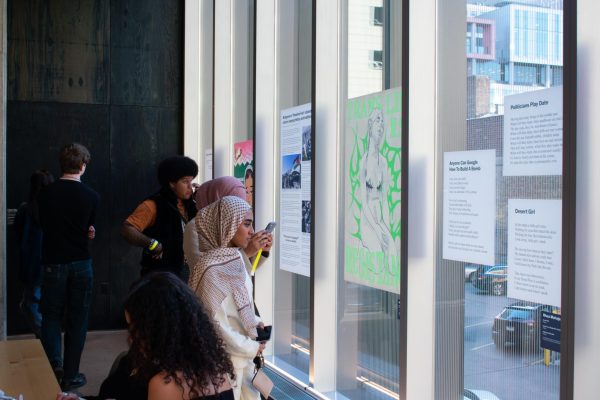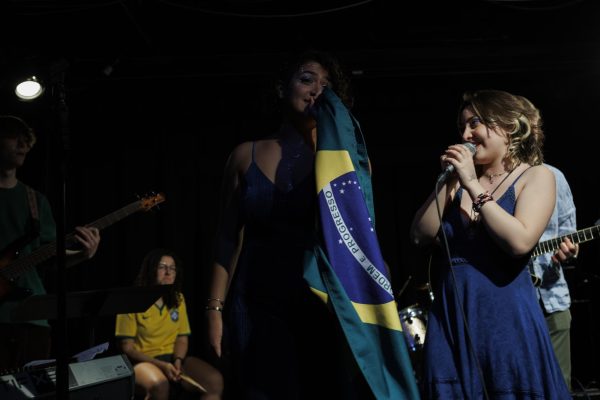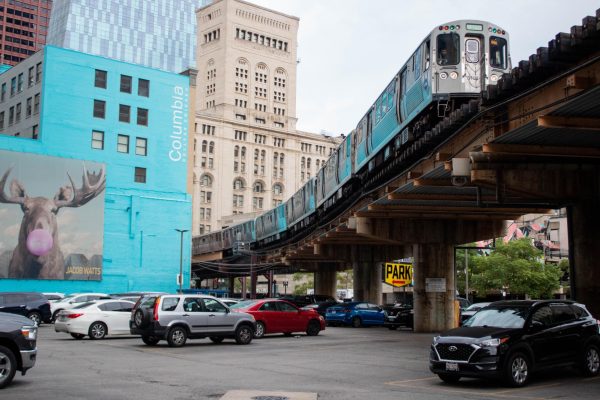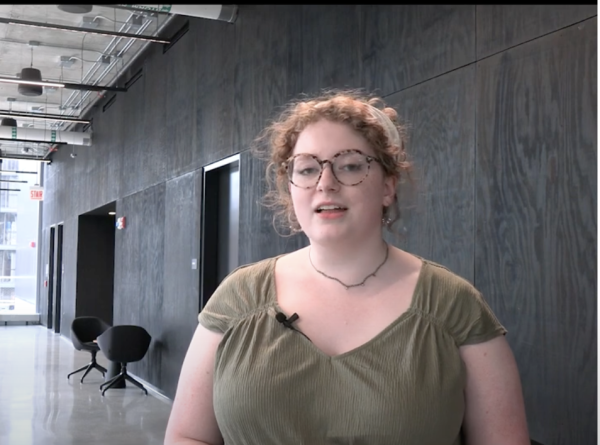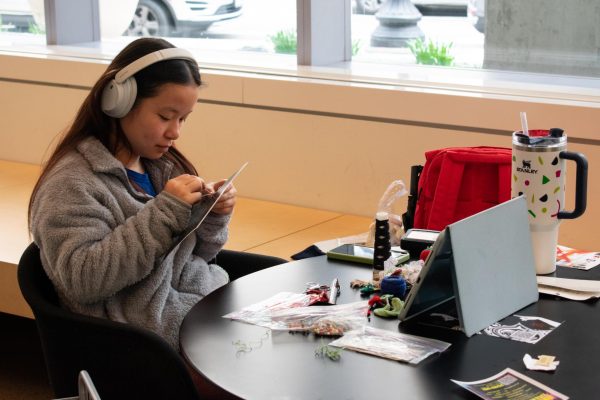CUATRO: Bringing Puerto Rican sounds to Columbia
November 16, 1998
The presence of Puerto Rican culture and rhythm captured the hearts of Columbia students Thursday, Nov. 5th in the Hokin Center. A program called “Cuatro” promoted a band by the name of Guarionex who played instrumental music with a Latin-Caribbean beat that reflected the origins of Puerto Rico. The four-piece band attracted hundreds of students who had a sneak peek at what the Cuatro program had in store for their main event at Roberto Clemente School on Saturday Nov. 7.
The Cuatro project originally began seven years ago in New Jersey. It recently introduced itself to Chicago by starting the first Puerto Rican Conference and Festival at Roberto Clemente Community Academy. The academy is located at the heart of Chicago’s Puerto Rican community, 1147 N. Western Ave. The program was organized by the Puerto Rican Arts Alliance, in collaboration with the Afro-Caribbean Music Society, the Chicago Caribbean Arts Association and The Music Express.
Cuatro’s project planning committee decided to share their history with Columbia students who had the privilege of getting a sample of their upcoming conference/festival. It began with a welcoming introduction by Carlos Flores, Columbia’s former project coordinator for Black research and organizer of Chicago’s Puerto Rican Cuatro Conference.
The introduction consisted of the history of Puerto Rican culture and how it is expressed through music. Flores also described the significance of the cuatro — a popular guitar-like instrument that brings about a rare acoustic sound. The instrument can be dated back to the 17th century and is one of the main centerpieces for traditional Puerto Rican music. “The cuatro had been used for almost 500 years,” Flores said. “It is our companion during pain and solitude and lightens the spirits of the Puerto Rican people.”
Flores helped organize the event to present a true appreciation for Latin American music. “We’re trying to take this music out of the bars and bring it to more educational places,” he said. The project’s main purpose is to educate people and to bring back the Puerto Rican culture.
“We want to feature Puerto Rican music to those who paid no attention to what we’re really about,” said Flores. “Many people in the United States are not too familiar with Puerto Rican music and a lot of it is stereotyped as just salsa.”
Historically, Puerto Ricans have lived through many hardships, mainly because of politics and strict class divisions by their colonies. Yet, a lot of Puerto Ricans have undervalued their own culture politically as well as socially. The cuatro is considered the national instrument of Puerto Rico and is a tool for group cohesion and survival. It is also described as the expression of love for their native culture. The cuatro reminds Puerto Ricans of the common bond that unites them from the isolated communities deep in the islands to the cities of San Juan, Los Angeles, New York, Chicago, Miami and even as far as Hawaii.
Xavier Mendez, Guarionex’s lead cuatro guitarist, is known for his complicated guitar techniques. His love for traditional Puerto Rican music began at the early age of seven. “I used to watch these musicians playing on streets in Puerto Rico,” he said. “I wanted so much to play the guitar and I knew it was something I would do for the rest of my life.” Mendez is currently a music teacher at Music Express, 2752 W. Fullerton, and has been with Guarionex for almostTero, his brother, bongo player, Orlando Tero, and Peco Arroyo, who plays the guido. The guido is a wooden instrument that is scratched for sound and is widely used by many Latin American musical groups.
The group wore simple yet appropriate matching attire for musicians: black vest, white collar shirt and dark maroon pants. Their first instrumental piece, “Impromptu,” began with the exquisite sounds of classical guitars that flowed along with its Latin bongo percussion, and eventually the guido.
What was amazing about Guarionex is that their music was a mixture of European music and African rhythms which the Puerto Rican musicians had absorbed as their own traditional form of Latin style.
Columbia students also received a special treat in addition to Gaurionex. A young vocalist by the name of Hiram Martinez sung along a few tunes with the group. Some of his music included “Siez Samonero” and “Igaldo Calueno.” Martinez seemed to capture the spotlight with his romantic lyrics, strong vocals, and boyish looks. It was almost like witnessing Juan Gabriel’s soul, Enrique Iglesia’s image, and Gloria Estefan’s rhythm all rolled into one. The women were awed with passion and the men cheered with enthusiasm as Martinez held his hand on his chest and sang about the heart of Puerto Rico. Part of the lyrics included, “Un gran paiz sera patria mia” which means “My patriotism to a great country.”
The one-hour event ended with the grand finale of “Recordando a Mari” (“Remembering Mari”), a romantic and enchanting melody that was written by Xavier Mendez.
The program was a crossover success at Columbia because it broke the barriers of stereotypical music for Puerto Rico. For a moment, it seemed to become a universal style of the youth culture. The number of diverse students, Spanish speaking as well as non-Spanish speaking united to witness a true legacy of Puerto Rico.
Madalene Roman-Vargas, Director of Latino Affairs and Assistant Dean of Student Life, described the Cuatro program as a great success. “It’s very nice to see the community coming together to get a taste of Puerto Rican culture,” she said. “The cuatro is not just about playing music, but it explains the origin of such songs that are played.” Roman-Vargas also recalls growing up listening to the same kind of music in her family household in Puerto Rico.
According to Chicago Tribune sources, organizers of Cuatro hope to make the event an annual fair, and, by next year, add an art exhibit and a mural to their education efforts.
The main event of Cuatro had continued on Saturday at Roberto Clemente High School, 1147 N. Western Ave. The program began with a workshop on the history of Cuatro, a photo exhibition, following an evening concert event featuring world renown quatristas and other local artists including: Yomo Toro, Edwin Colon Zayas and Alvin Medina.




